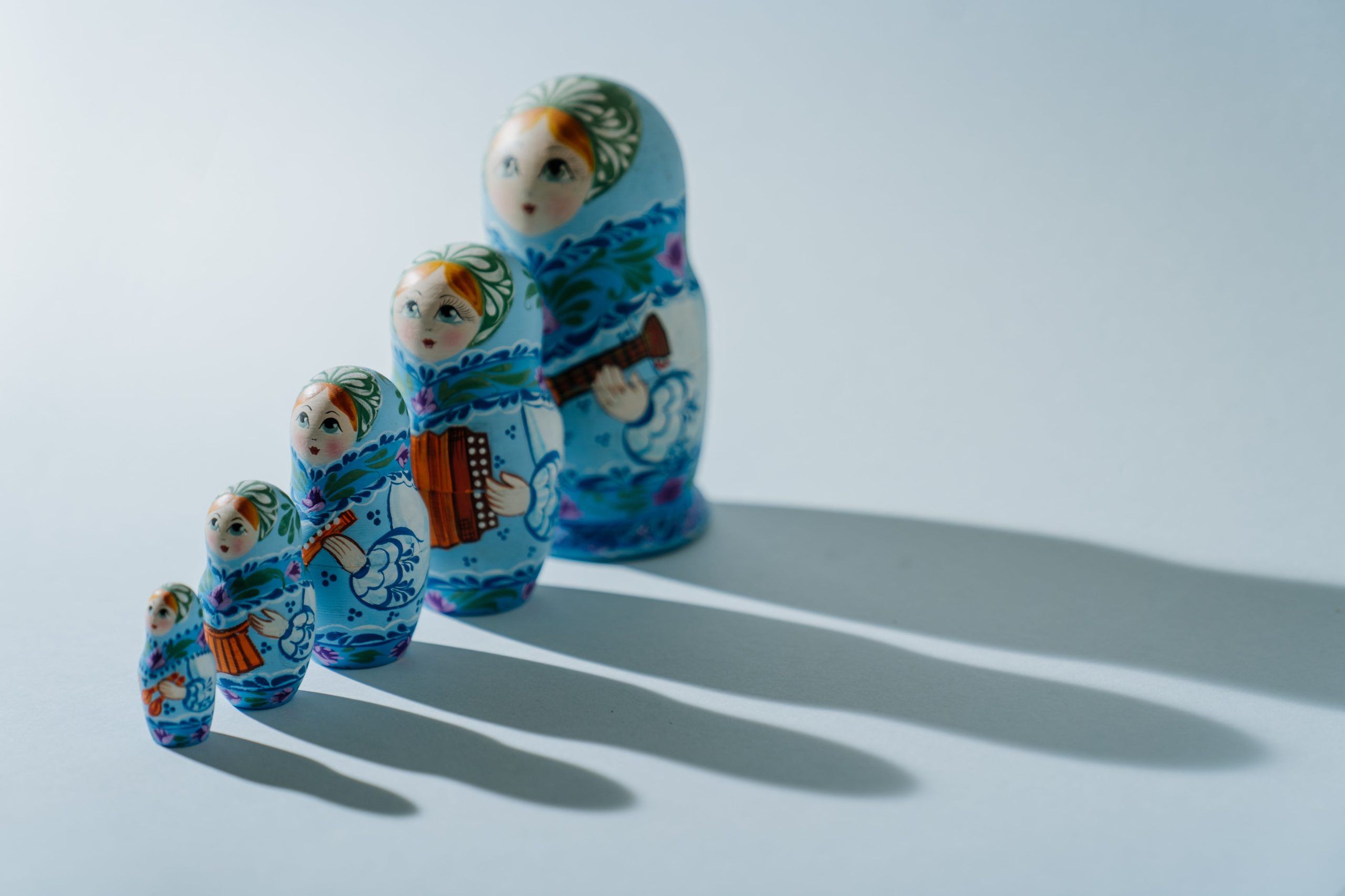Once when I was little, my father brought home a doll from a business trip. It was a Russian doll, the wooden kind that is divided in the middle across the abdomen, and painted. The doll is hollow and contains another, smaller doll, which contains a yet smaller one, and so on, until you reach the innermost doll which is not divided, but whole and small as a little bean.
The dolls are all painted and if you twist them correctly, the little Russian babushka has a perfect little apron, a shawl and hands folded over her round belly. If you twist them wrongly, she looks a bit grotesque, face above the bum and feet pointing the wrong way like some exorcist had played around with her. All the dolls were decorated differently, and you could of course line them up side by side, but their snug fit of one inside the other was what made them extra lovely. Because I was (and still am) a very untidy person, it happened that I lost one half, or one part was chewed by a dog. That would ruin the whole doll, even if it was an inner sheath you could still see from the outside that she wasn’t complete.
There was something inherently human about the different envelopes, and already as a little girl, I felt that this is how we are, layer upon layer and at the centre, we have something that cannot be removed and maybe not even touched.
Many years later, I found my Russian doll in Indian philosophy, which also talks about our personas as built one layer upon another. BKS Iyengar likens the koshas to a Russian doll, but I doubt he ever played with one as a child. When I studied the koshas they really evoked this image and the sensation of truthfulness this notion had to me as a little girl. BKS Iyengar talks of “sheaths” rather than envelopes. They cover the innermost nucleus of our being, the undivided, unchangeable atman, our soul, or maybe our DNA, if that’s how you prefer to see it.
The superficial outer layer is the annamaya kosha. It’s the envelop of the physical body. It is dependent on food, water and air. It is the body as it is described in an anatomy book, and includes all the organs, the muscles, bones, nervous system and the blood vessels.
Inside the annamaya kosha resides the next layer, the energy body, the pranamaya kosha. We know the prana as the life force, as manifested in the breath. Obviously, these two koshas are interdependent. No annamaya without pranamaya, and vice versa.
Underneath this envelope, lies the manomaya kosha, which can be translated as the envelope of the mind, or of the mental body. It makes sense that the mind and the willpower is next level, trying to steer the outer koshas.
The next envelope is the intellectual body, the vijnanamaya kosha, the wisdom and knowledge which again covers the body of bliss and soul, the anandamaya kosha. These envelopes are often misaligned, like the Russian dolls, when they are not correctly twisted to fit the upper and lower half. When they are, we are not communicating with the different parts of ourselves successfully and we feel disconnected, and out of sync.
One of yoga’s primary jobs is to harmonise the koshas, so that they work together, fulfil each other, stimulate and nudge each other as the musicians in a symphony orchestra. As always, I would love to hear from you with your comments and questions.
Warm greetings,
Emily
